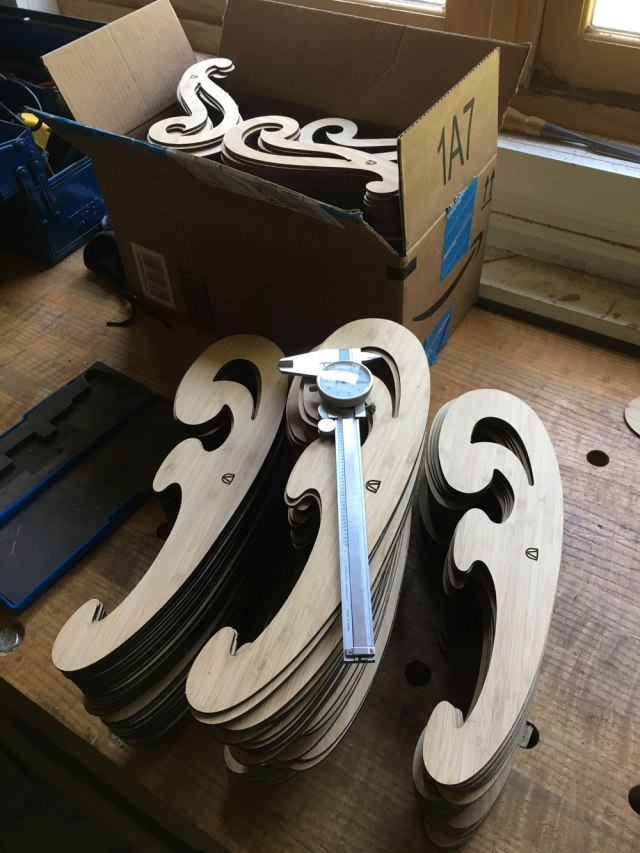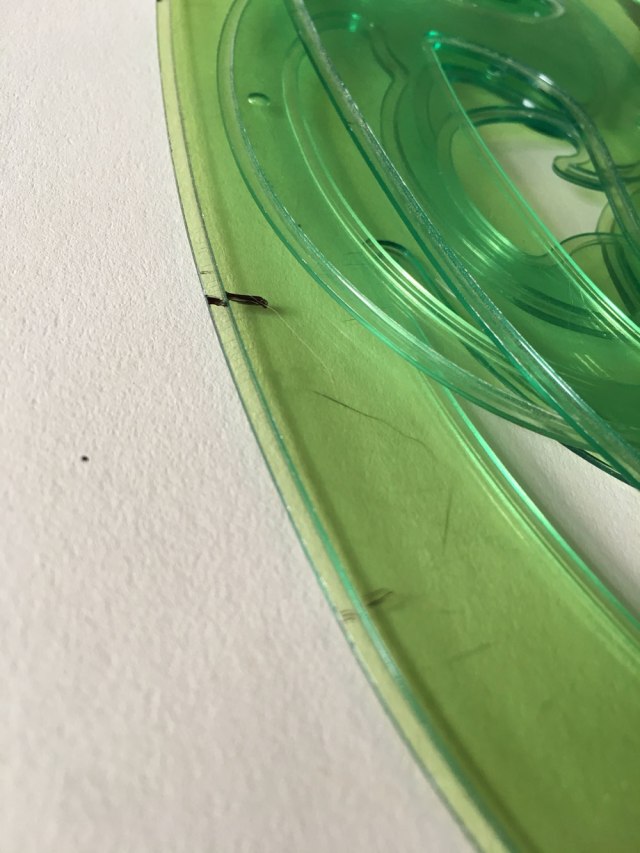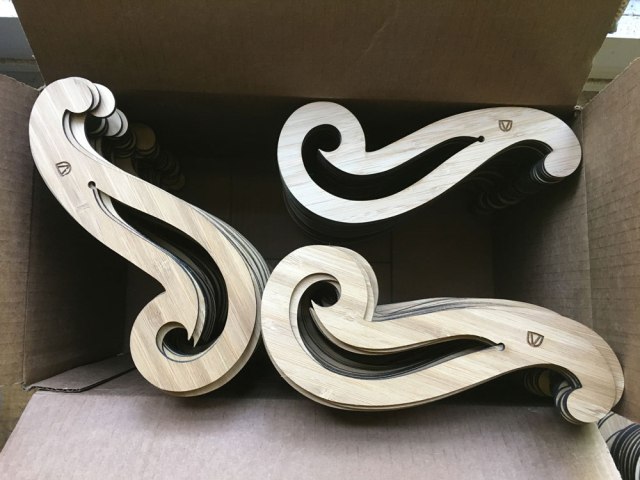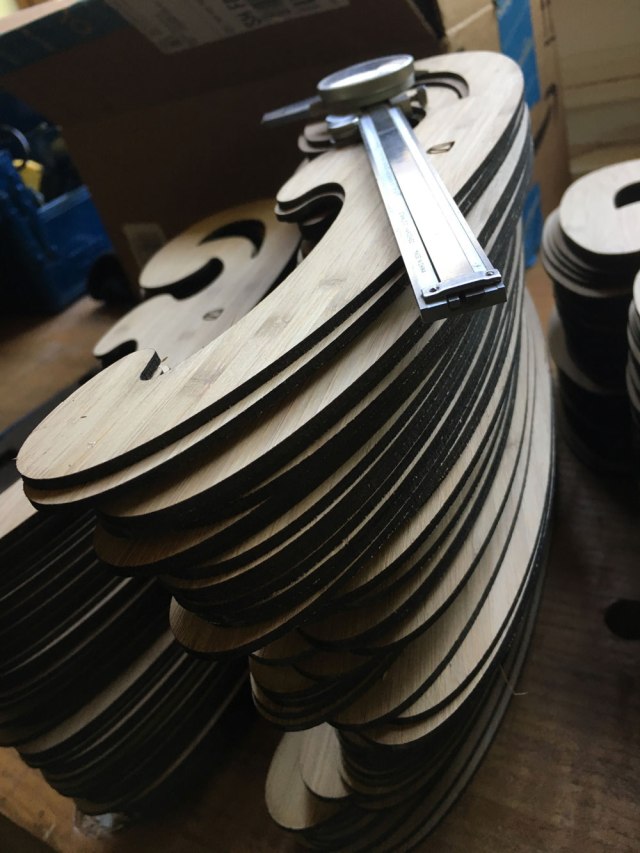
While a compass and straightedge can design simple pieces of furniture, you also need curves that have a varying radius to draw smooth shapes that connect three or four points – the accelerating curves that give motion and life to furniture.
The tools for these important curves are commonly called French curves or Burmester curves. And they are the starting (and ending) point for any designer who wants to escape rigid rectilinear shapes and simple circles.
While you can buy inexpensive plastic curves at an art supply store, the plastic tools have disadvantages compared to traditional wooden curves.

Most plastic curves have a small rabbets along their edges. While we understand the function of the rabbet, we think it interferes with making a true and smooth line because you can tilt your pencil or pen. Traditional wooden curves have no rabbet, allowing greater accuracy.
Second, plastic curves are difficult to mark notations on, such as where you want a curve to start and stop. You can mark them with a permanent marker, but this is slow, inaccurate (in our experience) and messy. Plus, smooth plastic curves slide too easily on the paper while making your mark, again, spoiling your accuracy.
Traditional wooden curves, which are difficult to come by on the used market, are a joy to use. Warm in the hand, they are precise, they stick to the paper while you are drafting and it’s easy to write (and erase) notations on their surfaces.
The problem with traditional wooden curves is they were not truly dimensionally stable as they were typically made from solid hardwood. They were also fragile.

The Crucible Design Curves
When we set out to design our curves we wanted them to be strong and stable (like plastic curves) but warm, accurate and easy to use (like wooden curves). The solution was a special five-ply bamboo material specially designed for laser-cutting.
We designed our curves using an English set made in 1943 as our foundation and inspiration. The curves are cut and engraved in Covington, Ky., then sanded to #220-grit in our shop in Fort Mitchell, Ky.
Bamboo is the perfect material for this tool. It is more dimensionally stable than any hardwood or softwood that we know of, it doesn’t absorb moisture as readily as wood and the five plies of veneer ensure it will stay the same shape year round.
Like plastic curves, these will bend readily across curved shapes without breaking.
Our first set of curves consists of three of our favorite shapes. The large curve is about 12″ long. The smaller two are about 6″ long. A full set of curves encompassed many individual tools. And while we hope to bring out more curves in the future, we think these three are an excellent starting point.
We are introducing these curves at Handworks 2017 where we will sell a set of three for the introductory price of $37. After Handworks they will be available in our online store. We might have to increase the price slightly for shipping and packaging costs charged by our warehouse.
Please stop by our booth at Handworks and give them a try. We’ll have a huge pile of them to sell in protective boxes suitable for travel.
— Christopher Schwarz
